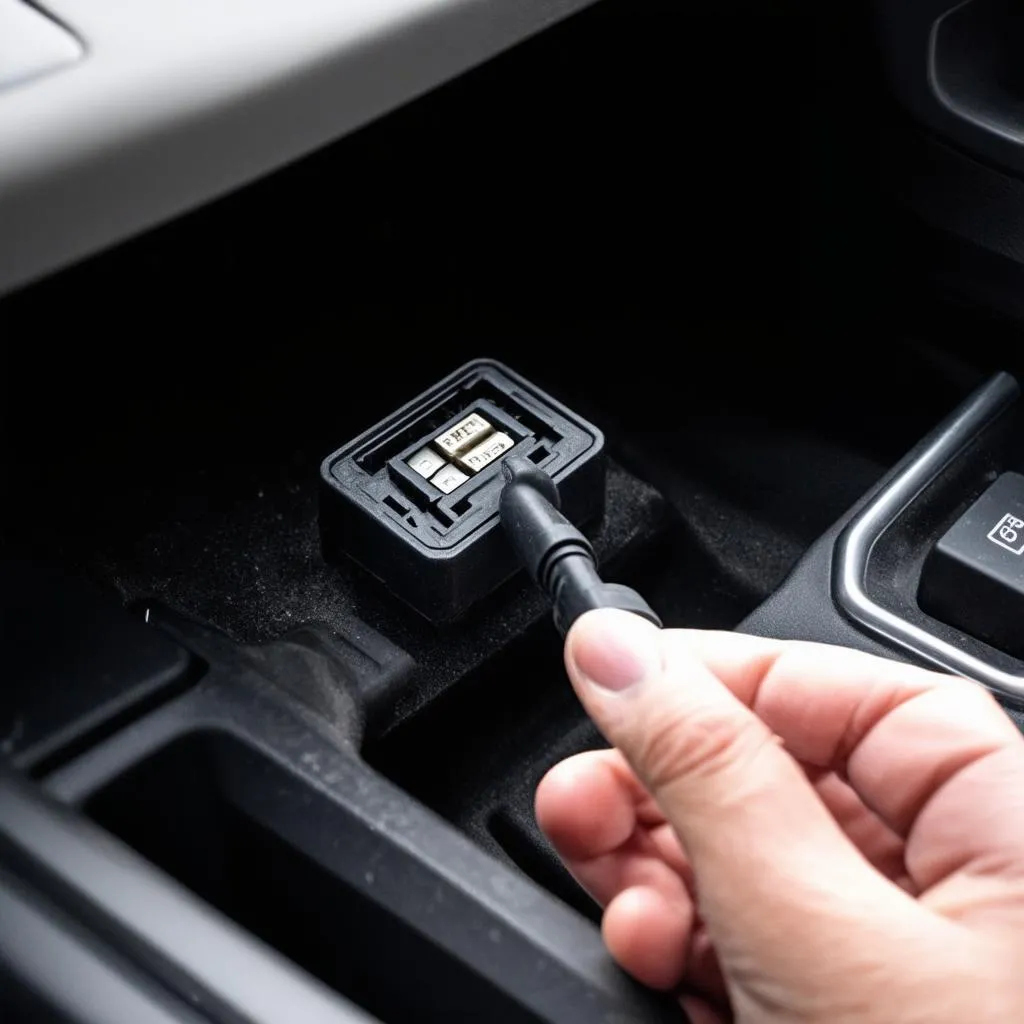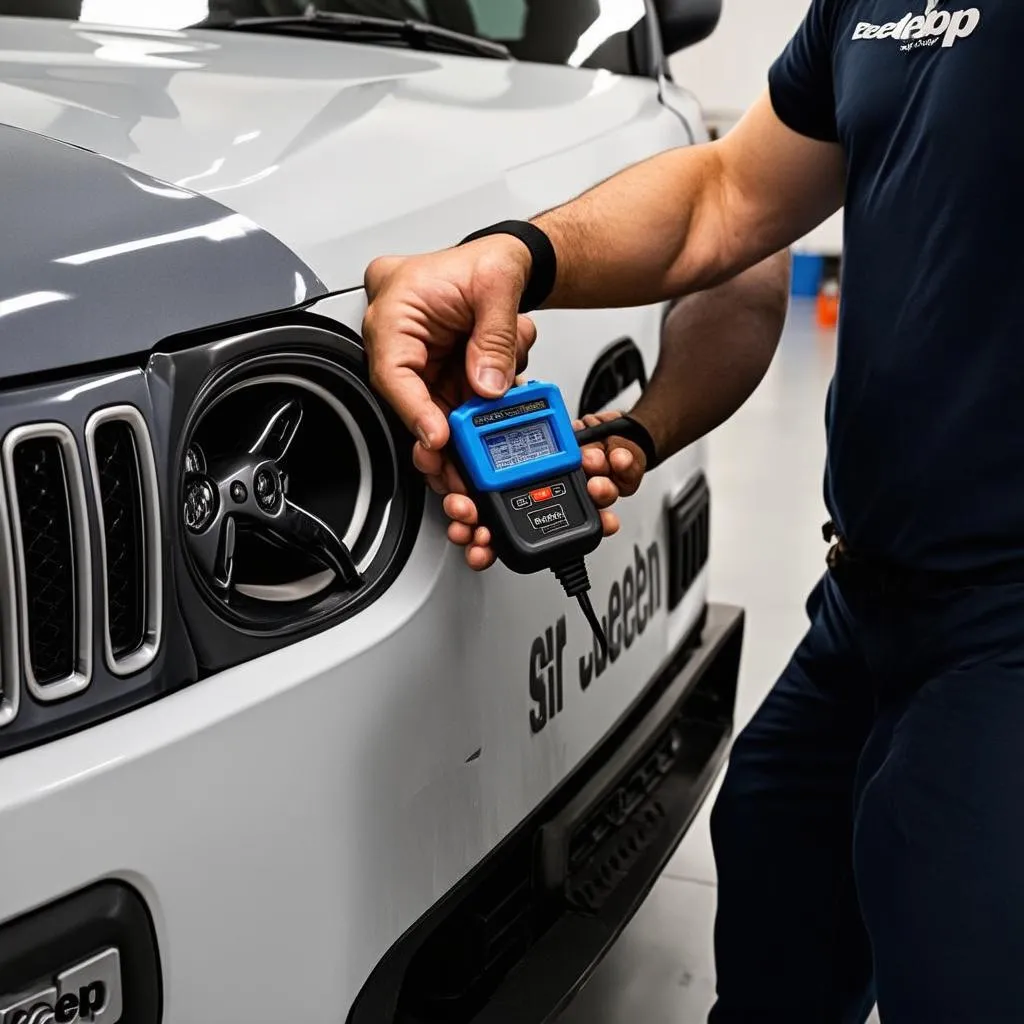Ever get that feeling where your Renegade is trying to tell you something, but you just can’t understand the language? Don’t worry, we’ve all been there! Just like we rely on words to communicate, your Jeep uses its onboard diagnostics system to signal any issues. And the key to understanding those signals? The OBD-II port, of course!
This guide will help you locate the OBD port on your 2016 Jeep Renegade so you can get back to cruising with confidence.
Unlocking the Secrets: Why is the OBD Port Important?
The OBD-II port, often referred to as the “brain” of your car’s electrical system, is vital for diagnosing and troubleshooting. Think of it as a direct line of communication to your Renegade’s inner workings. Mechanics and DIY enthusiasts alike use this port to:
- Read and clear Diagnostic Trouble Codes (DTCs): These codes act like flares, signaling potential issues within your car’s systems.
- Monitor engine performance: The OBD port provides real-time data on parameters like speed, RPM, and fuel efficiency, allowing for a comprehensive understanding of your vehicle’s health.
- Customize vehicle settings: For the tech-savvy, the OBD port allows for adjustments to certain vehicle settings, enhancing performance and personalization.
Pinpointing the Port: Where to Look in Your 2016 Jeep Renegade
In most vehicles, the OBD-II port is located on the driver’s side, under the dashboard, and within reach of the steering wheel. The 2016 Jeep Renegade is no different! Here’s a more precise guide:
- Settle into the driver’s seat.
- Locate the hood release lever. The OBD-II port will be situated near this lever, usually above it.
- Feel around for a trapezoidal-shaped connector with 16 pins. It might be covered by a small plastic flap for protection.
Still can’t find it? Don’t worry! Your owner’s manual should contain a diagram highlighting the exact location.
 OBD-II port location
OBD-II port location
Beyond the Basics: FAQs about Your Renegade’s OBD Port
Here are some common questions Jeep Renegade owners have about the OBD-II port:
Q: Can I use any OBD scanner with my Renegade?
While numerous aftermarket scanners are available, it’s generally recommended to utilize a high-quality scanner specifically designed for Chrysler/Jeep vehicles. These specialized scanners can access manufacturer-specific codes and data for more comprehensive diagnostics.
Q: What if I can’t clear a trouble code?
If a code persists even after clearing it, it usually indicates an underlying issue requiring further investigation. Consulting a qualified mechanic is recommended in such cases.
Q: Can I damage my car by using the OBD port incorrectly?
While the OBD port itself is fairly robust, it’s crucial to avoid forcing connectors or using incompatible tools.
 Mechanic connecting a diagnostic tool
Mechanic connecting a diagnostic tool
Keep Your Renegade Running Smoothly
Remember, your 2016 Jeep Renegade’s OBD port is a valuable tool for understanding and maintaining your vehicle’s health. By knowing its location and utilizing it effectively, you can ensure smooth driving and address potential issues proactively.
Need expert help diagnosing or fixing your Jeep Renegade? We’re here to help! Contact our team of automotive specialists via WhatsApp at +84767531508 for 24/7 support and guidance.
Looking for more helpful tips and tricks for your Jeep? Explore our other articles on techcarusa.com!